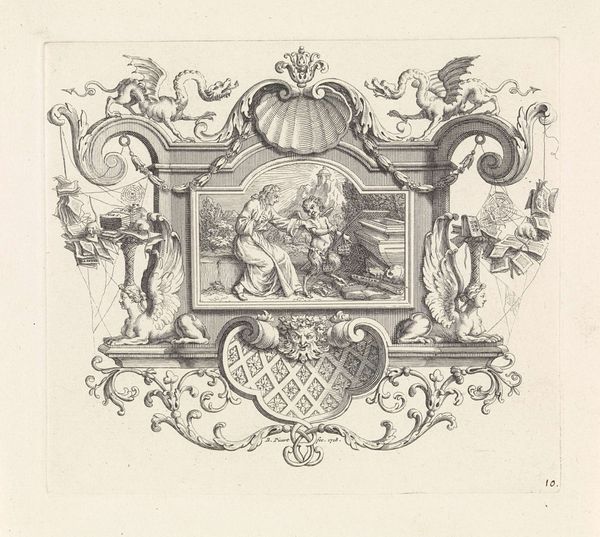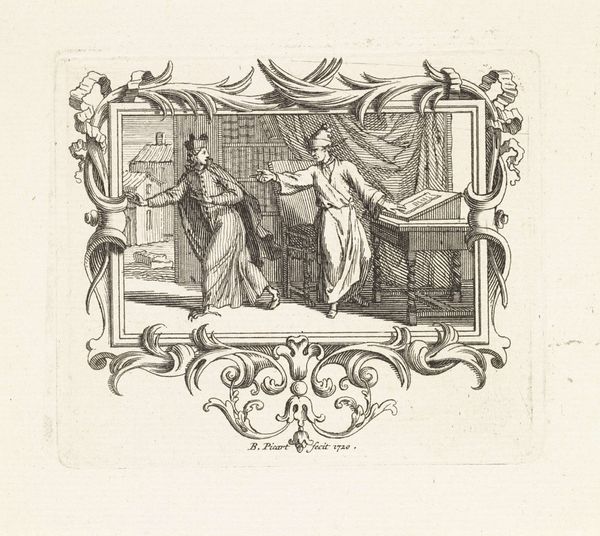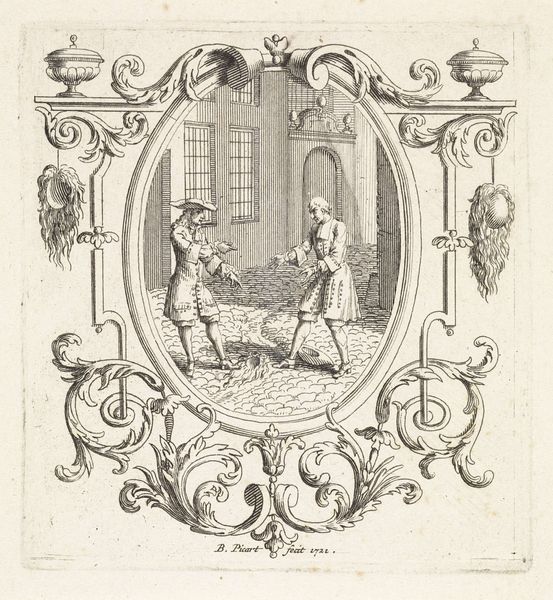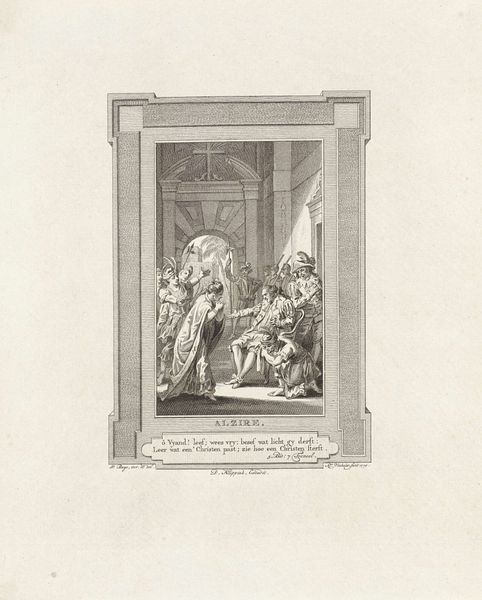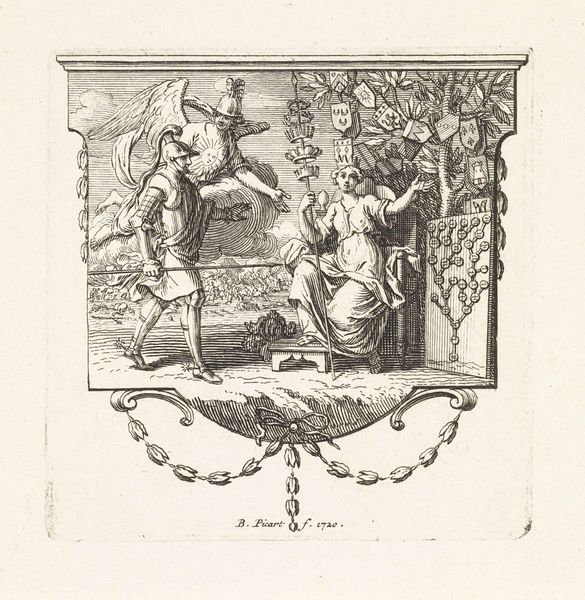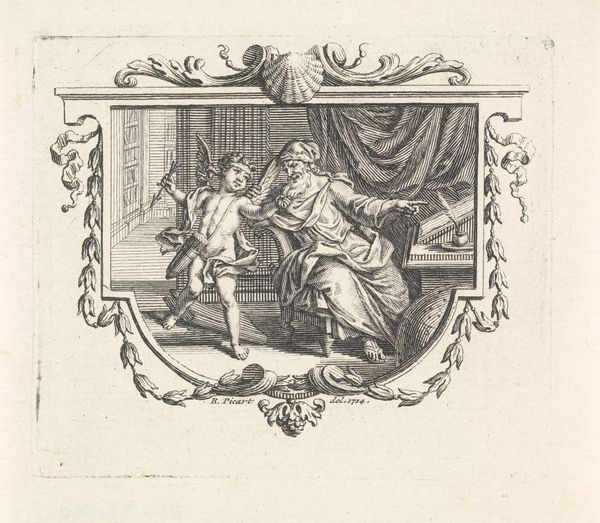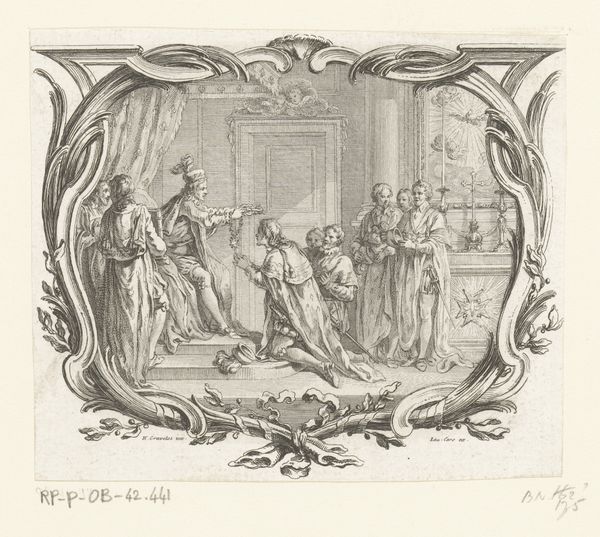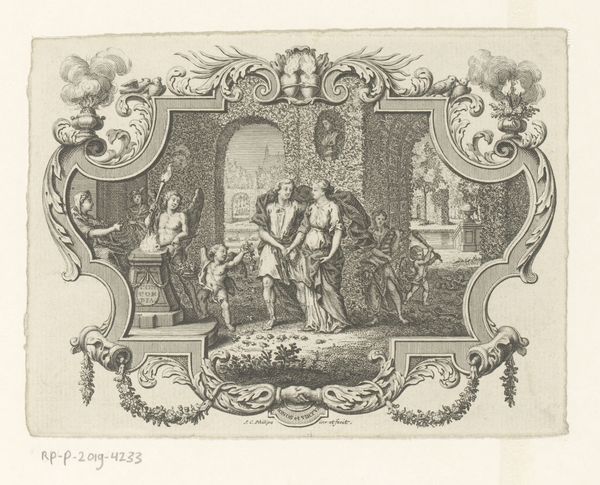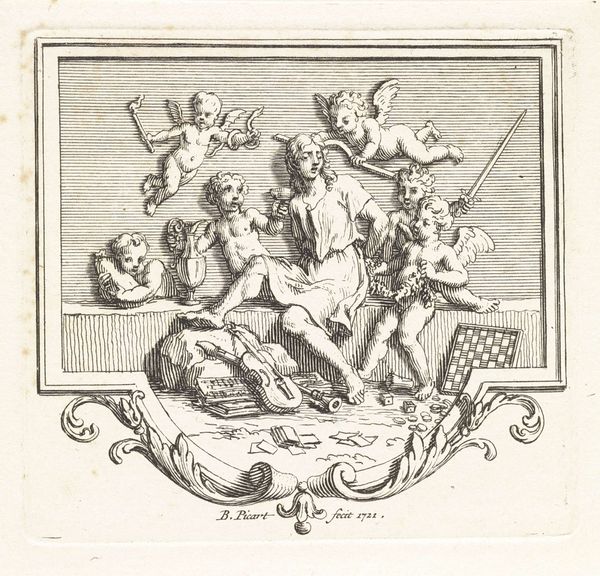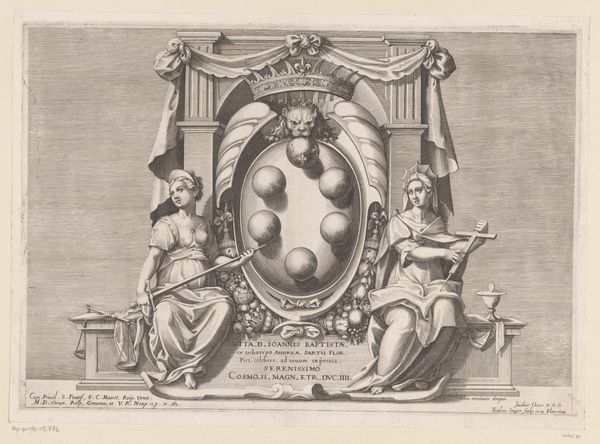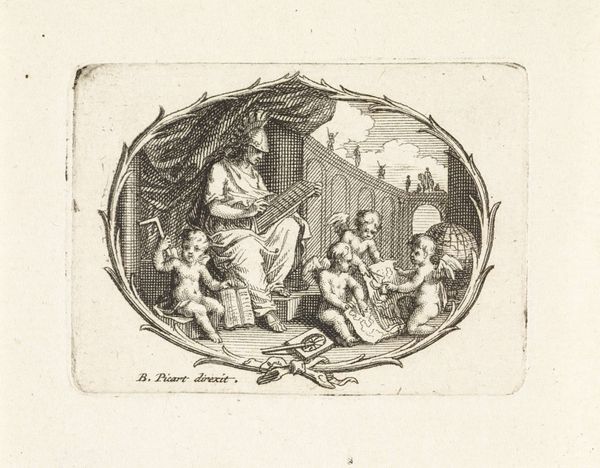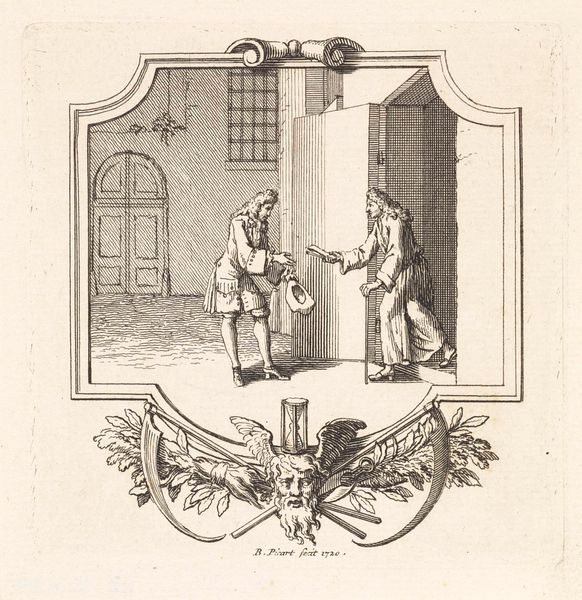
print, engraving
#
portrait
#
baroque
# print
#
pen illustration
#
pen sketch
#
old engraving style
#
figuration
#
line
#
history-painting
#
engraving
Dimensions: height 68 mm, width 74 mm
Copyright: Rijks Museum: Open Domain
Editor: This print, "Boodschapper bij een vorst" or "Messenger at a court" created in 1720 by Bernard Picart, presents a scene with elegantly dressed figures within an ornate, almost theatrical frame. It has a distinctly hierarchical feel to it. What jumps out at you when you look at this piece? Curator: It is quite evocative of the Baroque era, isn’t it? I immediately consider the social and political dynamics Picart is portraying here. The performance of power, the visual cues of hierarchy like dress, setting, and gesture, all carefully crafted for a specific audience and political climate. It’s fascinating how he uses line to suggest depth and space while emphasizing the artificiality of the courtly scene. Editor: Artificiality? In what way? Curator: Consider the placement of the figures, the way their bodies relate – or don't relate – to one another. It's very staged. The grandiosity of the surrounding frame pushes this further, mimicking the ornate decorations popular amongst royalty that served to create physical and psychological distance. This was a society deeply concerned with image and perception, a preoccupation Picart captures effectively. Editor: So, you're saying the print isn’t necessarily about a specific event, but more about the overall structure of power in that era? Curator: Exactly. The "messenger" becomes a vehicle to explore how authority is presented and reinforced visually. Think about where this image might have been seen: within wealthy homes, reproduced in books perhaps. Each context shapes its meaning, solidifying or subtly questioning these power structures for its viewers. Editor: I see your point. The frame isn’t just decorative, but an integral part of understanding the piece's statement about class. I will keep this in mind for the audio guide text. Thanks! Curator: Indeed. Remembering these objects weren’t created in a vacuum always reveals new layers. It was my pleasure!
Comments
No comments
Be the first to comment and join the conversation on the ultimate creative platform.
